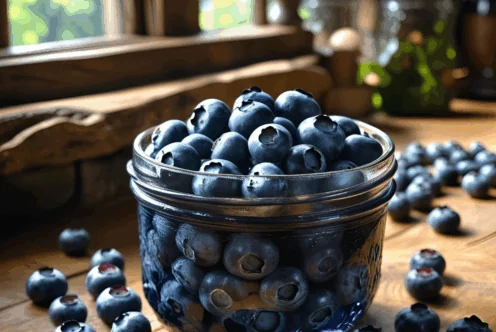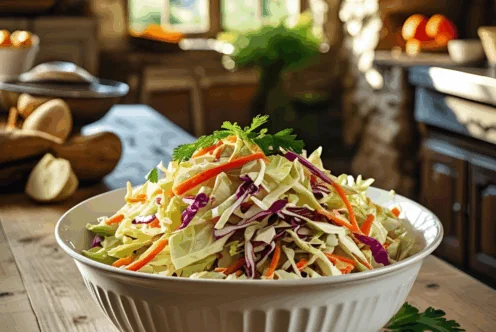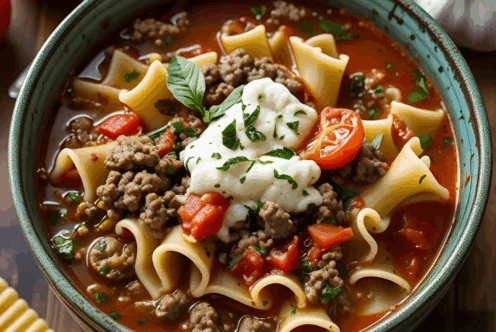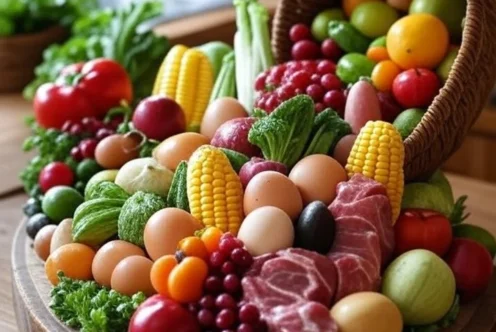Blog
How to Build a Healthy Salad
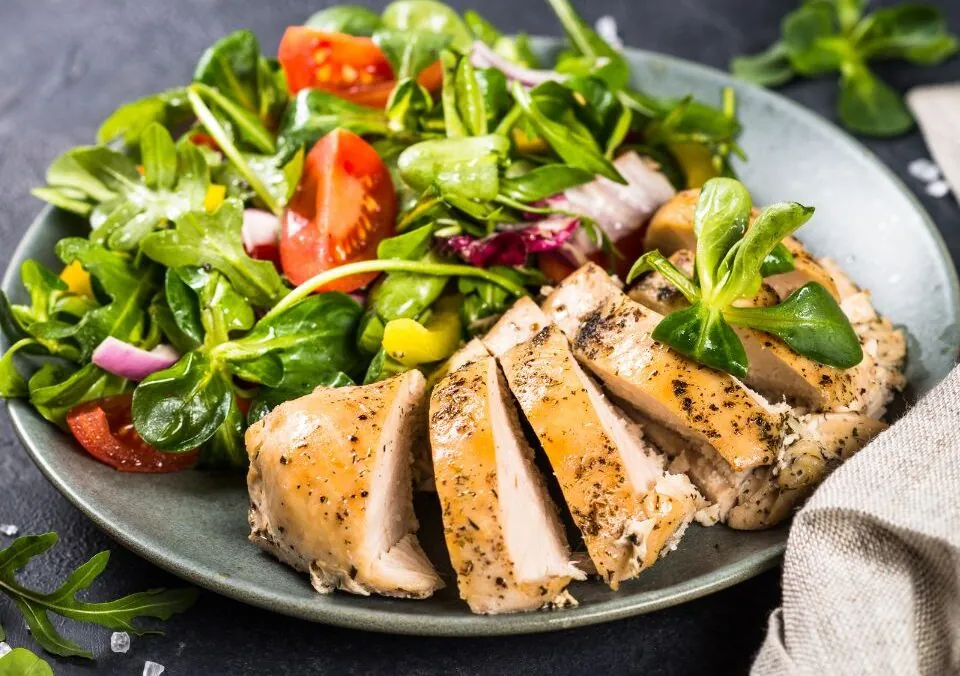
Salads are versatile, vibrant, and can be incredibly nutritious when built thoughtfully. For many, they are a go-to meal, especially for those seeking a quick yet healthy option. However, the health benefits of salads can diminish rapidly if we’re not careful about the ingredients we choose. In this guide, we will explore how to create a salad that is wholesome, filling, and full of flavor while also providing some surprising insights into the world of salads.
Why Salad?
Salads often get a bad rap as being boring or unsatisfying. However, when you think about it, a salad can encompass a vast array of ingredients, textures, and tastes. They can be crisp and refreshing or warm and hearty. A well-balanced salad can also provide a satisfying meal that is packed with nutrients. For many, a salad isn’t just a side dish; it acts as the backbone of a nutritious meal plan.
According to the Centers for Disease Control and Prevention (CDC), eating a variety of fruits and vegetables regularly can significantly reduce the risk of chronic diseases such as obesity, diabetes, and heart disease. Salads provide an excellent means to pack in those nutrients.
Adding Protein and Healthy Fats
One key component of a healthy salad is the addition of protein and healthy fats. These nutrients help to keep you fuller for longer, making it less likely that you’ll reach for unhealthy snacks shortly after eating. Here are several great options:
Protein Sources
- Grilled Chicken or Turkey: Lean poultry provides a great source of protein without too much saturated fat. Look for skinless options to keep it even healthier.
- Seafood: Fish like salmon, shrimp, or tuna not only adds protein but also healthy omega-3 fatty acids, which have numerous health benefits. The American Heart Association recommends including fish in your diet twice a week.
- Legumes: Beans, lentils, and chickpeas are excellent plant-based protein sources. They are also rich in fiber, which can aid digestion and contribute to feelings of fullness.
- Nuts and Seeds: Almonds, walnuts, pumpkin seeds, and chia seeds not only add crunch but also deliver protein and healthy fats. However, be cautious with portions, as they are calorie-dense.
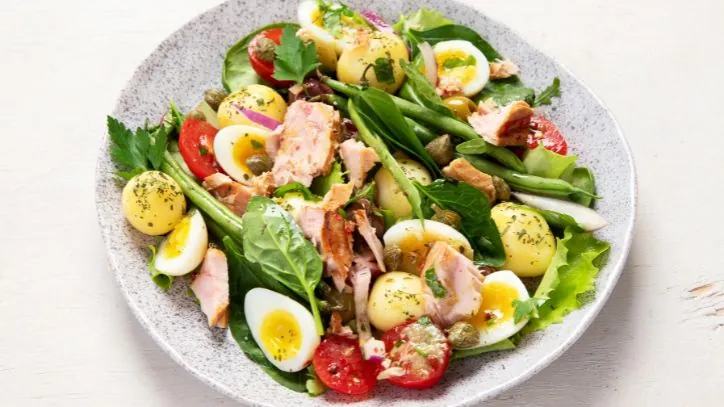
Healthy Fats
Incorporating healthy fats into your salad aids in the absorption of fat-soluble vitamins (A, D, E, K) present in your veggies. Some healthy fat options include:
- Avocado: Creamy and tasty, avocados provide good fats and are also loaded with fiber.
- Olive Oil: Utilizing olive oil as a dressing not only enhances flavor but also presents benefits associated with a Mediterranean diet, such as improved heart health. The Mayo Clinic emphasizes this diet’s heart-healthy attributes.
- Cheese: Adding a sprinkle of feta or Parmesan can elevate flavor and also contribute unique nutrients, including calcium.
Dressing Matters: Watch the Amount
Dressing can make or break your salad. While it enhances flavor, dressings can also add unwanted calories, sodium, and sugars. Many store-bought dressings are laden with preservatives and unhealthy fats.
Choosing the Right Dressing
- Vinaigrettes: A simple homemade vinaigrette made with olive oil, vinegar, and herbs is an excellent choice. This allows you to control the quality and quantity of ingredients. The Food Network offers various basic vinaigrette recipes.
- Yogurt-Based Dressings: If you’re craving creaminess, consider yogurt-based dressings, which tend to be lower in calories yet still satisfying.
- Portion Control: Use a small amount of dressing — a tablespoon or two is generally sufficient. This keeps the flavor without overwhelming the salad with calories.
Alternatives to Traditional Dressings
- Citrus Juice: Lemon, lime, or orange juice can provide a refreshing zest without adding excess calories.
- Herbs and Spices: Fresh herbs such as cilantro, parsley, or basil can add flavor without the calories of traditional dressings.
Skip the Croutons
Croutons are a classic addition that many people enjoy for their crunch. However, they are often made from refined white bread and can add extra carbs and sodium without substantial nutritional value. Instead, consider these alternatives for added crunch and nutrition:
- Seeds: Sunflower seeds or pumpkin seeds add a delightful crunch and are rich in nutrients.
- Nuts: Sliced almonds, walnuts, or pecans contribute healthy fats and protein.
- Whole-Grain Crackers: Crushed whole-grain crackers can also provide the desired crunch while being more nutritious than traditional croutons.
Pick Greens Wisely
The foundation of any great salad is the greens. While there are many different types, not all greens offer the same health benefits. Here are some popular options and their nutritional profiles:
- Spinach: Packed with vitamins A, C, and K, spinach is a nutritional powerhouse. It’s low in calories and high in fiber, making it perfect for weight management.
- Kale: Highly regarded as a superfood, kale is loaded with antioxidants, calcium, and potassium. It can be a bit tougher than other greens, so massaging it lightly with olive oil can help make it more palatable.
- Arugula: Known for its peppery flavor, arugula is rich in vitamins and has been shown to support digestive health due to its fiber content.
- Mixed Greens: A blend containing various greens can maximize nutrient intake and provide various textures and flavors for your salad.
- Iceberg Lettuce: While refreshing, iceberg lettuce has low nutritional value. If you enjoy its crispness, consider mixing it with more nutrient-dense greens.
It’s also essential to consider the origins of your greens. Many communities, such as those in Arizona, support local farmers who provide fresh, seasonal produce. Supporting local agriculture ensures you receive the highest quality products and promotes sustainability.
Adding Color: The Rainbow Effect
One way to ensure your salad is full of nutrients is to add various colorful vegetables. Each color represents different vitamins and minerals. Here’s a breakdown:
- Red: Tomatoes and red bell peppers are rich in antioxidants like lycopene, promoting heart health.
- Orange/Yellow: Carrots and bell peppers are excellent sources of beta-carotene, which is beneficial for vision and skin health.
- Green: Broccoli and cucumbers provide fiber and are low in calories.
- Purple: Beets and red cabbage are packed with vitamins and can help with inflammation.
Including various colors not only enhances the visual appeal of your salad but also ensures a broader range of nutrients.
Exploring Other Veggies
While leafy greens are often the star of salads, don’t shy away from adding other vegetables.
- Cruciferous Vegetables: Broccoli, cauliflower, and Brussels sprouts are not only nutritious but also add a satisfying crunch.
- Roasted Vegetables: Adding warm roasted vegetables, such as sweet potatoes, can create a heartier salad and deepen the flavor profile.
- Fermented Options: Adding sauerkraut or kimchi can enhance flavors and offer probiotic benefits for gut health.
Topping Ideas to Elevate Your Salad
Beyond the basic ingredients, think about toppings that add flavor, texture, and nutrition:
- Fruits: Add fresh fruit like berries, apples, or citrus to provide a sweet contrast to savory flavors.
- Cheese: As mentioned earlier, a sprinkle of cheese can add creaminess and depth. Options like goat cheese or blue cheese can elevate flavors.
- Protein Additions: Consider hard-boiled eggs, tofu, or tempeh for added protein and texture.
Mindful Eating: Enjoying Your Creation
After crafting the perfect salad, take a moment to enjoy the process. Eating mindfully can elevate your dining experience.
- Savor Each Bite: Consider the flavors, textures, and colors of the salad as you consume it.
- Limit Distractions: Try to eat without distractions to fully enjoy the experience and recognize when you are full.
- Hydration: Pair your meal with water or herbal tea to keep hydration levels up, which also aids digestion.
Making Salads Part of Your Routine
Creating a salad habit doesn’t have to be hard. Here are simpler strategies to incorporate salads into your daily routine:
- Meal Prep: Prepare salad ingredients in advance to streamline the process during busy weekdays. Wash, chop, and store veggies in airtight containers for easy access.
- Experiment: Don’t be afraid to step outside your comfort zone! Trying new ingredients or dressing combinations can keep your salads fun and interesting.
- Recipe Ideas: Check out blogs and cookbooks for new salad recipes. Websites like AllRecipes and EatingWell have excellent resources for inspiration.
Conclusion
Building a healthy salad is more than just tossing greens into a bowl. It’s an art that involves balancing flavors, textures, and nutrients while also ensuring that the meal remains satisfying. By incorporating lean proteins, healthy fats, colorful vegetables, and mindful dressing choices, salads can become a highlight of your meal plan. Plus, with the support of local agriculture, achieving that great salad is easier and tastier than ever.
Try incorporating these tips to build your ultimate salad, and enjoy the delicious journey toward healthier eating! For more health articles, be sure to check out the Fill Your Plate blog, where they offer a wealth of information about nutrition, recipes, and promoting local agriculture. Enjoy your culinary adventure!
By Heide Kennedy, Arizona Farm Bureau Communications Intern














